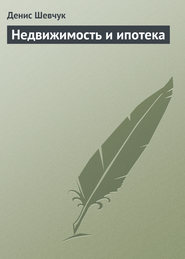По всем вопросам обращайтесь на: info@litportal.ru
(©) 2003-2024.
✖
Английский для экономистов (учебник английского языка)
Год написания книги
2009
Настройки чтения
Размер шрифта
Высота строк
Поля
moderate(ly)
gradual(ly)
slight(ly)
a little
slow(ly)
Ex. 17. A picture is worth 1000 words. Economists, being efficient, like to present ideas in graphs, which are a type of picture. But graph is worth 1000 words only if a person looking at it knows the graphical language (graphish). Study the following information to be able to read any graph. Find the Russian equivalents for the highlighted words.
Graphs are used in two ways: 1. to present an economic model or theory which focus on hypothetical relationships; 2. to present real-world data visually. Actually, these two ways of using graphs are related. They are both ways of presenting visually the relationship between two things.
Graphs are built around a number line, or axis (axes, pl). Axes are called vertical and horizontal. We can plot the information on two axes. When we connect two points we have a line. Even if the line is straight, economists call any such line drawn on a graph a curve. A curve can bea linear curve, a downward-sloping curve, an upward-sloping curve, a nonlinear curve.
Economists use the following graphs in presenting actual economic data:
Line graph Bar graph
Flow chart Pie chart
Ex. 18. Give the English equivalents to the following.
Приобретает все возрастающее значение; альтернативные издержки; при таких условиях; который должен быть принесен в жертву; постарается быть самодостаточным; тарифы; квоты на импорт; условия торговли; нетарифные барьеры; навязывать ограничения; защитить отечественную промышленность; таможенные пошлины; налог на единицу товара; в определенный период; установить более высокий стандарт качества на товары.
Ex. 19.Translate the following sentences into English.
1.Это следует рассматривать с точки зрения действия всей системы. 2.Одна из ее функций – эффективное размещение ресурсов. 3.Рыночная цена – результат взаимодействия спроса и предложения на товары и услуги. 4.Экономика не может существовать без системы распределения. 5.Все решения – это отражение всех компонентов культуры. 6.Когда мы говорим о государственном секторе, мы подразумеваем бюрократический аппарат. 7. Если происходит нарушение закона, они знают, что у них есть защита. 8.Чтобы успешно конкурировать, организация должна иметь доступ к современным технологиям. 9.Все организации зависят от предложения рабочей силы. 10.Руководитель должно четко реагировать на все изменения в деловой среде. 11.В конечном итоге, успех организации определяют потребители.
Ex. 20.Let’s review the core concepts of economics. Translate the following into Russian.
1. Economics is the study of how people, individually and collectively, allocate their limited resources to try to satisfy their unlimited wants.
2. Scarcity occurs because human wants exceed the production possible with our limited time and resources.
3. A good is any item or service that satisfies a human want and, in so doing, adds to human happiness.
4. Production entails using technology to apply energy to materials in ways that make the materials more valuable, or that otherwise help satisfy human wants.
5. Labour resources are the physical and mental talents that people can make available for production.
6. Opportunitycost is the value of the best alternative surrendered when a choice is made.
7. Absolute prices are prices in terms of some monetary unit.
8. Relative prices are the prices of goods or resources in terms of each other, and are computed by dividing their absolute prices by one another.
9. Economic efficiency is achieved when we produce the combination of outputs with the highest attainable total value, given our limited resources.
10. Inputs are resources used in the production process, such as labour and raw or semifinished materials.
11. Outputs are transformed materials; the results of production.
12. Demand is the quantity of a specific good that people are willing and able to
buy during a specific period, given the choices available.
13. Supply refers to the quantity of a specific good that sellers will provide under alternative conditions during a given period.
14. Market equilibrium occurs at the price-quantity combination where the quantities demanded and supplied are equal.
15. Asurplus is the excess of the quantity supplied over quantity demanded when the price is above equilibrium.
16. Gross Domestic Product (GDP) is the total market value of goods and services produced within a country during some period, usually one year.
17. Gross National Product (GNP) is the value of all output produced by resources owned by the citizens of a country.
18. Economic growth is a positive quantitative change in an economic system; occurs when a society acquires greater productive capacity that can be used for consumption or investment.
19. Capital is all physical improvements made to natural resources that facilitate production, including buildings and all machinery and equipment.
20. Wealth is the value of the assets owned by an individual or a group of individuals.
SPEAK AND WRITE
1.Why is it important to view organizations open systems interacting with their environment?
2. Do you know any closed systems? Give some examples.
3. Give your own examples of the environmental influence on a business / on an individual.
4. Prepare a short report on the biography of a famous economist.
5.What would happen to standards of living in your country if all foreign trade were prohibited? How significant do you think this would be? In what areas would this impact be the strongest?
6.Does everything have a price? Are there some things you would not do regardless of price? Remember: prices and money are not synonyms; prices may be nonmonetary.
7. Summarize the information of the Unit to be ready to speak on Economics. The first step to be done is to write the plan of your future report.
8. Choose any question (problem, topic) relating to Economics and prepare a 5-7 minute report. Refer to different additional sources to make your report instructive, interesting and informative.
UNIT 2
BUSINESS ORGANIZATION
The world is a chain, one links another.
Your vocabulary









